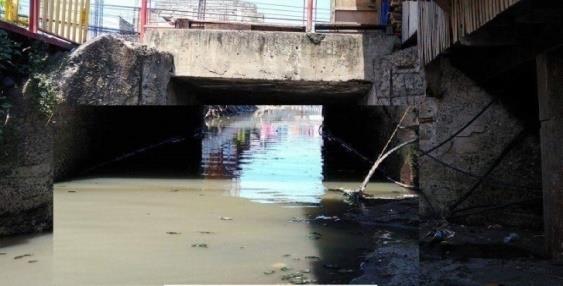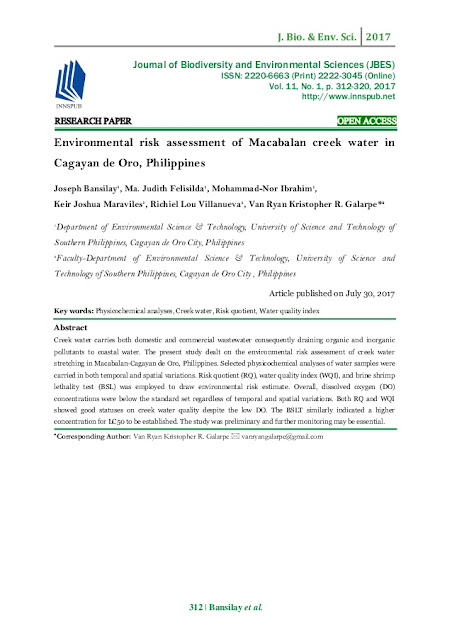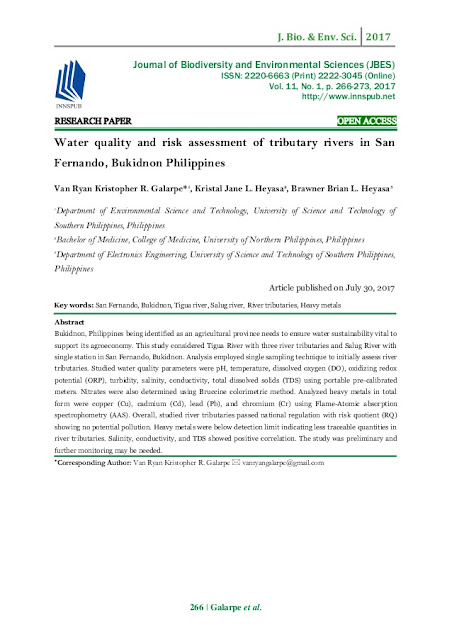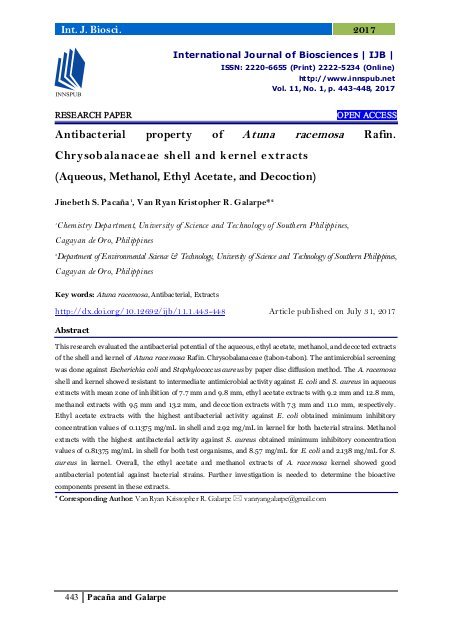By: Muhammad Shahab, Sergio Ruffo Roberto, Ronan Carlos Colombo, João Pedro Silvestre, Saeed Ahmed, Renata Koyama, Ibrar Hussain
Int. J. Biosci. 13(3), 1-9.
DOI:
http://dx.doi.org/10.12692/ijb/13.3.1-9
By: Muhammad Rizwan, Usman Shoukat Qureshi, Saman Chughtai, Abdul Ahad Qureshi, Maila-al-Saba Shah, Abdul Haleem
Int. J. Biosci. 13(3), 10-18.
DOI:
http://dx.doi.org/10.12692/ijb/13.3.10-18
By: Umara Afzal, Muhammad Awais, Pervaiz Anwar, Haleema Bibi, Mehwish Arshad, Mehwish Yaqoob, Faryal Kabir, Muhammad Gulfraz
Int. J. Biosci. 13(3), 19-28.
DOI:
http://dx.doi.org/10.12692/ijb/13.3.19-28
By: Muhammad Asrar, Mubashra Tabasum, Khizar Samiullah, Syed Makhdoom Hussain, Muhammad Samee Mubarik, Riffat Yasin, Shaheen Fatima, Abdul Rauf, Shakeela Naz, Mahpara Gilani, Muhammad Tayyab
Int. J. Biosci. 13(3), 29-37.
DOI:
http://dx.doi.org/10.12692/ijb/13.3.29-37
By: S. Noor Basha, Murali K.R. Tummuru, A. Krishna Satya, Chitra Bajji, Narendranath Alluri
Int. J. Biosci. 13(3), 38-44.
DOI:
http://dx.doi.org/10.12692/ijb/13.3.38-44
By: Elibariki Eliangilisa Kowero, Cecilia Leweri, Musa Chacha
Int. J. Biosci. 13(3), 45-50.
DOI:
http://dx.doi.org/10.12692/ijb/13.3.45-50
By: Hadjira Bouker, Houcine Abdelhakim Reguieg Yssaad, Mohamed Arbaoui, Amaria Belarbi
Int. J. Biosci. 13(3), 51-57.
DOI:
http://dx.doi.org/10.12692/ijb/13.3.51-57
By: Johara F. Aquino, Sharon Rose M. Tabugo
Int. J. Biosci. 13(3), 58-67.
DOI:
http://dx.doi.org/10.12692/ijb/13.3.58-67
By: Naveeda Manzoor, Kirn-e-Muneera, Muhammad Adnan S, Naseer Ahmed, Shazia Fatima
Int. J. Biosci. 13(3), 68-74.
DOI:
http://dx.doi.org/10.12692/ijb/13.3.68-74
By: Martinien Hospice Mahussi Assogba, Chakirath Folakè Arikè Salifou, Serge Gbênagnon Ahounou, Mahamadou Dahouda, Antoine Chikou, Souaïbou Farougou, Issaka Youssao Abdou Karim
Int. J. Biosci. 13(3), 75-93.
DOI:
http://dx.doi.org/10.12692/ijb/13.3.75-93




































